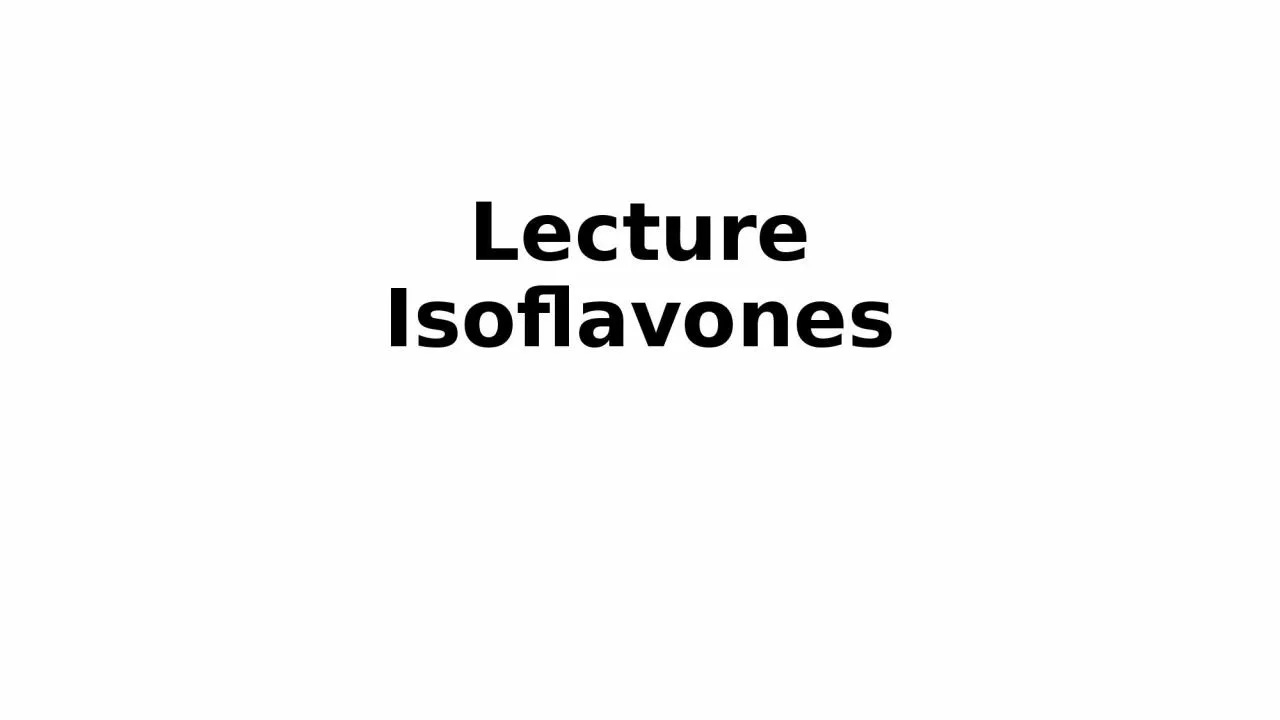

S ources Mechanism of Action Estrogenic and Antiestrogenic Activity Estrogenic and Antiestrogenic Activity Breast Cancer Breast Cancer Breast Cancer Prostate Cancer Bone Health Bone Health ID: 1000323
Download Presentation The PPT/PDF document "Lecture Isoflavones introduction" is the property of its rightful owner. Permission is granted to download and print the materials on this web site for personal, non-commercial use only, and to display it on your personal computer provided you do not modify the materials and that you retain all copyright notices contained in the materials. By downloading content from our website, you accept the terms of this agreement.
1. LectureIsoflavones
2. introduction
3. Sources
4. Mechanism of Action
5. Estrogenic and Antiestrogenic Activity
6. Estrogenic and Antiestrogenic Activity
7. Breast Cancer
8. Breast Cancer
9. Breast Cancer
10. Prostate Cancer
11.
12.
13. Bone Health
14. Bone Health
15. Bone Health
16. Menupause SymptomsThe benefits of soy go beyond reducing long-term cancer risk. Recent studies have found that soy isoflavones can reduce menopause symptoms such as hot flushes and increase bone density in women., many menopausal and post-menopausal health problems may resulIndeedt from a lack of isoflavones in the typical Western diet. Although study results are not entirely consistent, isoflavones from soy or red clover may be helpful for symptoms of menopause. A study carried out by "Health Test" in 2004 investigated the prescription behaviour of 27 doctors for women with menopause symptoms. It showed that isoflavones were recommended twice (44%) as often as hormonal treatment (22%). The prescribed supplements were mainly based on the following plants: soy, black cohosh and hops.
17. Reduce heart disease riskSoy isoflavones also appear to reduce cardiovascular disease risk via several distinct mechanisms. Isoflavones inhibit the growth of cells that form artery clogging plaque. These arteries usually form blood clots which can lead to a heart attack. A review of 38 controlled studies on soy and heart disease concluded that soy is definitely effective for improving cholesterol profile. There is some evidence that isoflavones are the active ingredients in soy responsible for improving cholesterol profile.
18. Isoflavones are natural antioxidantsA recent study has demonstrated that isoflavones have potent antioxidant properties, comparable to that of the well known antioxidant vitamin E. The antioxidant powers of isoflavones can reduce the long-term risk of cancer by preventing free radical damage to DNA. Genistein is the most potent antioxidant among the soy isoflavones, followed by daidzein.
19. Issues of Metabolism
20. Influence of diet on isoflavones metabolismYour intestinal flora has an effect on the metabolism of isoflavones. When your intestinal flora is low, for example when you take antibiotics, metabolism falls down. Transformation of daidzein into equol is also strongly influenced by your diet. A high carbohydrate environment, which causes increased intestinal fermentation, results in more equol production. When dietary intake of fat is high, intestinal flora has difficulty in synthesizing equol from isoflavones.
21. Issues of MetabolismMetabolism of isoflavonesIsoflavones occur in foods in the form of water soluble glucosides (daidzein, genistin and glicitin), which means that they are bound to sugar. These glucosides have to undergo further changes before they can become biologically active. They must first undergo hydrolysis by bacterial beta-glucosidases in our intestine, releasing the corresponding bioactive aglycones (daidzein, genistein and glycitein). Aglycones are rapidly and efficiently absorbed by our body, reaching a peak plasma level about 5 hours after consumption. They can be further metabolized to other bioactive metabolites such as equol. This is relevant because the potency of equol is higher than that of daidzein. Only 30�% of the population can convert daidzein into equol and are called equol producers.